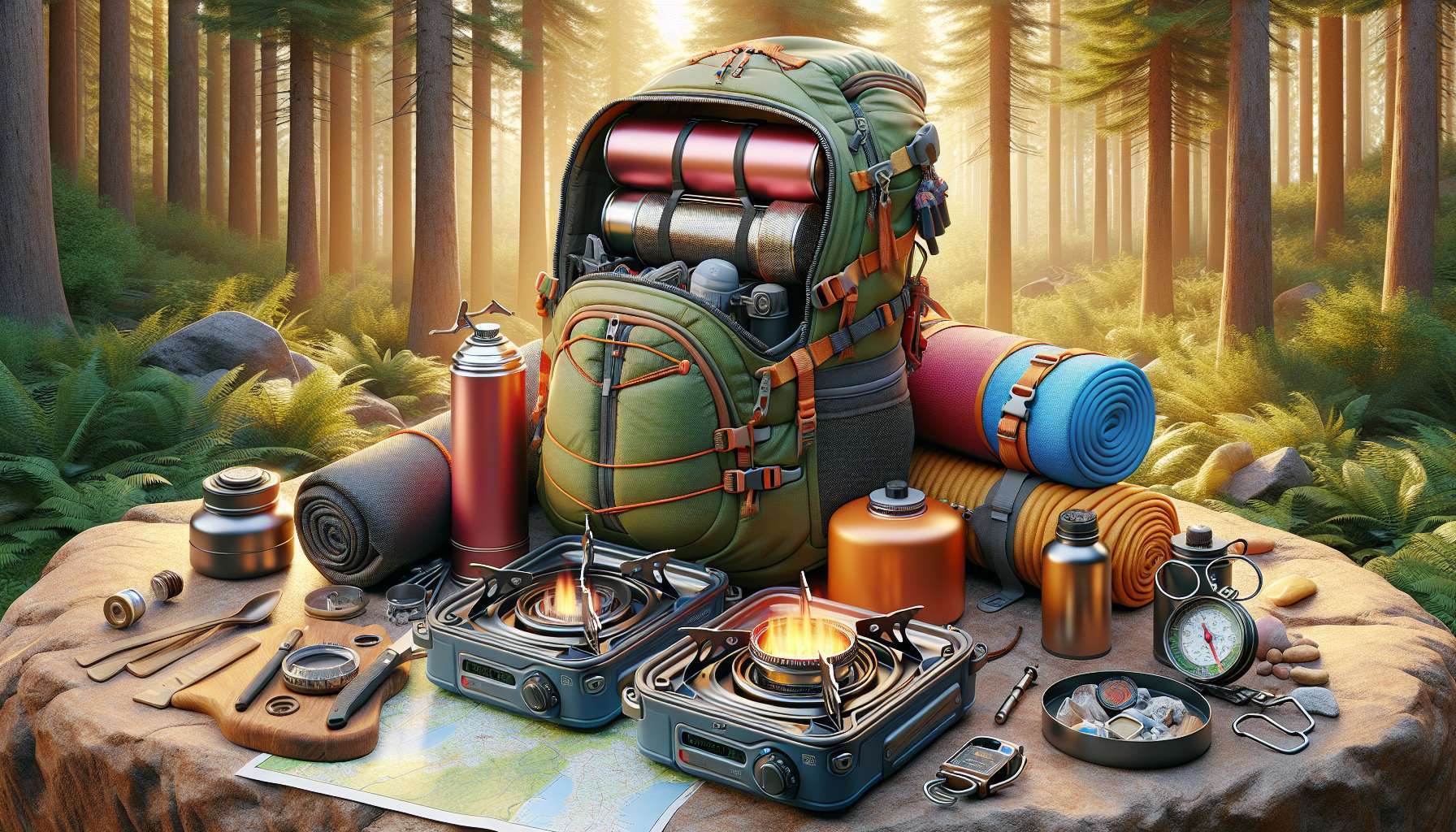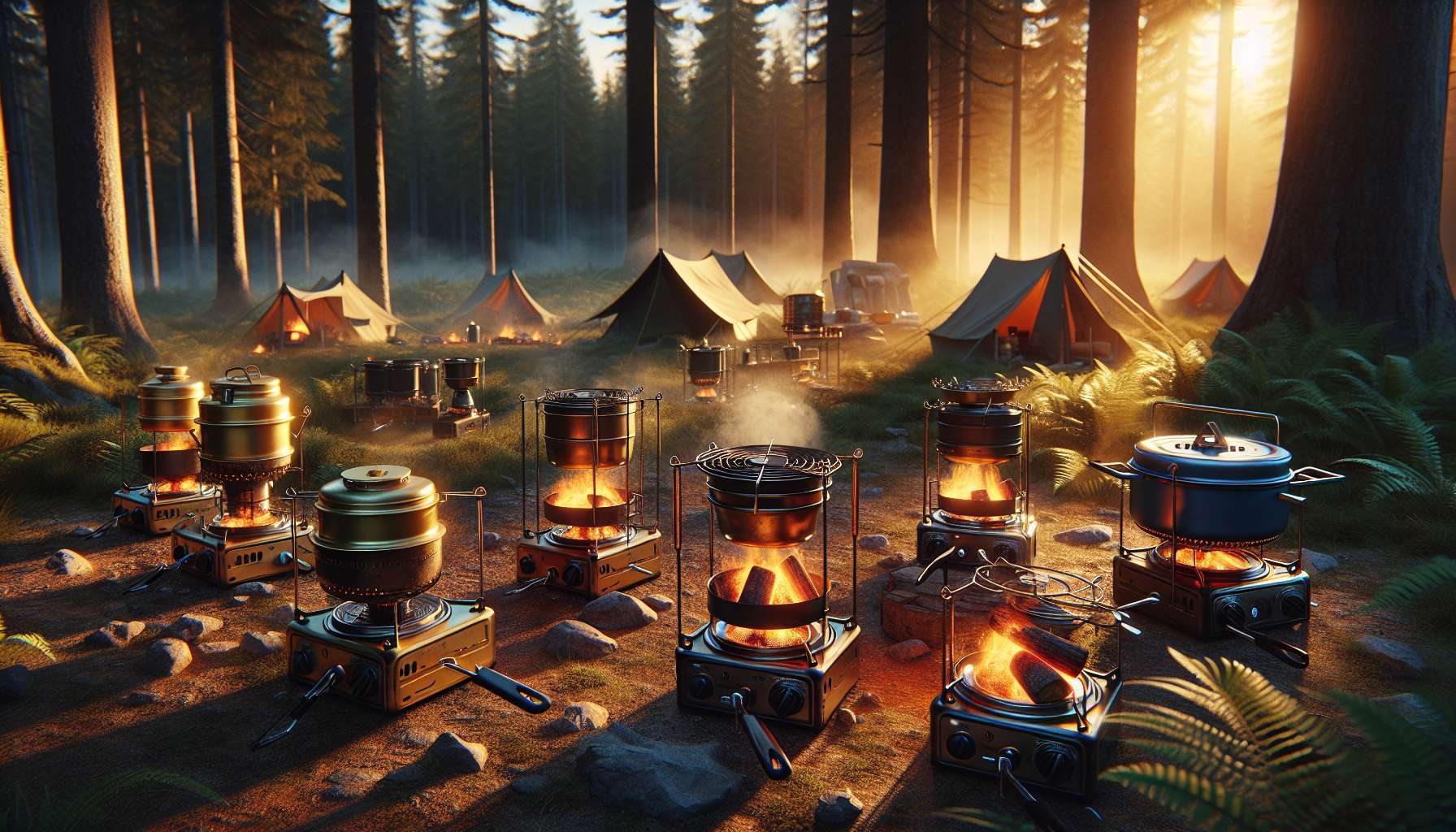Unpacking the World of Backpacking Stoves: A Comprehensive Guide
Welcome to the exciting world of backpacking stoves, where adventure meets innovation! Whether you’re a seasoned outdoor enthusiast or a novice explorer, having the right backpacking stove can make a world of difference on your outdoor adventures. From lightweight and portable designs to high-performance models, backpacking stoves come in a variety of shapes and sizes to cater to different needs and preferences. In this comprehensive guide, we will delve deep into the realm of backpacking stoves, exploring their history, technology, types, and much more. So, grab your gear and let’s embark on this informative journey together!
The Evolution of Backpacking Stoves
Backpacking stoves have come a long way since the early days of camping and hiking. The concept of portable stoves dates back to the 19th century when explorers and mountaineers began seeking lightweight and efficient cooking solutions for their expeditions. The first backpacking stoves were rudimentary in design, often consisting of simple burners fueled by alcohol or wood. Over time, advancements in technology and materials led to the development of more sophisticated and reliable backpacking stoves.
Today, backpacking stoves utilize a variety of fuel sources, including propane, butane, white gas, and even renewable energy sources like solar power. Modern backpacking stoves are designed to be lightweight, compact, and fuel-efficient, making them ideal for outdoor enthusiasts who prioritize mobility and convenience. Whether you’re embarking on a multi-day trek through the wilderness or simply enjoying a weekend camping trip, having a reliable backpacking stove can enhance your outdoor experience significantly.
Types of Backpacking Stoves
When it comes to choosing a backpacking stove, there are several types to consider, each with its own set of pros and cons. Let’s take a closer look at some of the most popular types of backpacking stoves:
1. Canister Stoves
Canister stoves are one of the most popular choices for backpackers due to their convenience and ease of use. These stoves consist of a burner that attaches to a disposable fuel canister, typically filled with isobutane or a propane/butane mix. Canister stoves are lightweight, compact, and easy to set up, making them ideal for solo hikers or small groups. However, they may not perform as well in cold temperatures or at high altitudes.

2. Liquid Fuel Stoves
Liquid fuel stoves, also known as white gas stoves, are a reliable option for backpackers who need a versatile and high-performance stove. These stoves use white gas as their primary fuel source, which is typically stored in refillable fuel bottles. Liquid fuel stoves are known for their durability, efficiency, and ability to perform well in a variety of conditions. They are a popular choice for long-distance hikers and expeditions where reliability is paramount.

3. Wood Burning Stoves
Wood burning stoves offer a more sustainable and eco-friendly alternative for backpackers who prefer to use natural resources for cooking. These stoves are designed to burn twigs, pinecones, and other biomass materials, eliminating the need to carry fuel on your adventures. Wood burning stoves are lightweight, cost-effective, and can be an excellent option for minimalist backpackers or those who enjoy the ritual of building a fire.

4. Alcohol Stoves
Alcohol stoves, also known as spirit burners, are a simple and lightweight option for backpackers looking for a budget-friendly stove. These stoves use denatured alcohol or other alcohol-based fuels to generate heat for cooking. Alcohol stoves are easy to use, affordable, and can be a great choice for ultralight backpackers or those who prefer a minimalist approach to outdoor cooking.
Choosing the Right Backpacking Stove
When it comes to selecting the right backpacking stove for your adventures, there are several factors to consider. Here are some key considerations to keep in mind when choosing a backpacking stove:
1. Fuel Type
The type of fuel a backpacking stove uses can have a significant impact on its performance, efficiency, and versatility. Consider the availability of fuel sources in the areas where you plan to hike, as well as the temperature and altitude conditions you are likely to encounter. Some fuels, like canister stoves, perform better in warmer climates, while others, like liquid fuel stoves, are more suitable for cold weather and high altitudes.
2. Weight and Size
Weight and size are critical factors to consider when choosing a backpacking stove, especially if you are looking to minimize your pack weight. Canister stoves are typically the lightest and most compact option, making them ideal for ultralight backpacking. However, if durability and performance are more important to you, you may opt for a slightly heavier liquid fuel stove or wood burning stove.
3. Cooking Style
Consider your cooking style and preferences when selecting a backpacking stove. If you prefer to cook elaborate meals with precise temperature control, a stove with adjustable flame settings may be more suitable for you. On the other hand, if you primarily boil water or rehydrate meals, a simple and efficient stove like a canister stove may be all you need.
Expert Opinions
We reached out to seasoned outdoor enthusiasts and backpacking experts to get their insights on choosing the right backpacking stove. Here’s what they had to say:
John, an experienced thru-hiker, recommends considering the long-term durability of a stove when making your selection. “I’ve been using the same liquid fuel stove for over a decade, and it’s never let me down, even in the most challenging conditions,” he says.
Sarah, a wilderness guide, emphasizes the importance of fuel efficiency when choosing a backpacking stove. “I always opt for a canister stove on shorter trips because it’s lightweight and efficient, but I switch to a liquid fuel stove for longer expeditions where I need a more reliable source of fuel,” she explains.
Common Misconceptions
There are several common misconceptions about backpacking stoves that can influence decision-making. One prevalent misconception is that all backpacking stoves are the same, when in fact, each type of stove has its own unique features and benefits. Another misconception is that lightweight stoves sacrifice performance, when in reality, many lightweight stoves are designed to be efficient and reliable.
Comparative Analysis
Let’s conduct a brief comparative analysis of the different types of backpacking stoves:
Canister Stove: Pros – Lightweight, easy to use, Cons – Performance may suffer in cold temperatures
Liquid Fuel Stove: Pros – Durable, versatile, Cons – Heavier, more complex setup
Wood Burning Stove: Pros – Sustainable, eco-friendly, Cons – Requires a constant source of fuel
Alcohol Stove: Pros – Lightweight, affordable, Cons – Slower cooking times, may be less efficient
Conclusion
To wrap things up, choosing the right backpacking stove is a personal decision that depends on your specific needs, preferences, and outdoor activities. Whether you opt for a lightweight canister stove, a durable liquid fuel stove, a sustainable wood burning stove, or a simple alcohol stove, the key is to select a stove that suits your cooking style and adventure goals. With the right backpacking stove by your side, you can turn any outdoor excursion into a culinary delight, no matter where your travels take you. So, gear up, pack your stove, and get ready to cook up some unforgettable memories on your next backpacking adventure!




